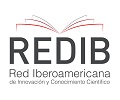EFFECT OF A NON-IONIC SURFACTANT ON THE PERMEABILITY OF BUTORPHANOL THROUGH EQUINE NASAL MUCOSA
DOI:
https://doi.org/10.14409/favecv.v19isuplemento.10945Keywords:
butorphanol; formulation; intranasal administration; equinesAbstract
Implementation of intranasal administration for the delivery of drugs with site of action into the central nervous system, such as butorphanol, became a potential choice in equine medicine. In this study, using Franz-diffusion cells the in vitro permeation rate through respiratory and olfactory equine nasal mucosa of two butorphanol formulations was estimated and compared. Both formulations had the same composition, was the exception for formulation 2, that contained 2, 5 x 10 -4 M of a non-ionic surfactant (tween 80). Butorphanol administered dose was 24, 4 mg/cm2. Plots of the cumulative amounts of butorphanol against time were constructed, where maximum flux values at the steady state (Jss), apparent permeability coefficients (Kp) and lag-time (tlag) were estimated. The Jss and Kp show that permeation of butorphanol through olfactory mucosa is different than respiratory mucosa. Moreover, Jss for formulation 2 was higher than formulation 1 in both anatomical areas, probably for the effect of the surfactant. The present results are promising to carry on with the development of formulation of butorphanol for intranasal administration.
Downloads
Published
How to Cite
Issue
Section
License
FAVE Sección Ciencias Veterinarias ratifies the open access model, in which contents (in full) are available free to anyone in the internet. The costs of production and publication are not transfered to the authors. This policy intends to break social and economical barriers that generate inequities in the access to information, and for the publication of research results.
All articles can be accessed at http://bibliotecavirtual.unl.edu.ar/publicaciones/index.php/FAVEveterinaria/issue/current/, under license Creative CommonsAtribución-NoComercial-Compartir Igual 4.0 Internacional.










